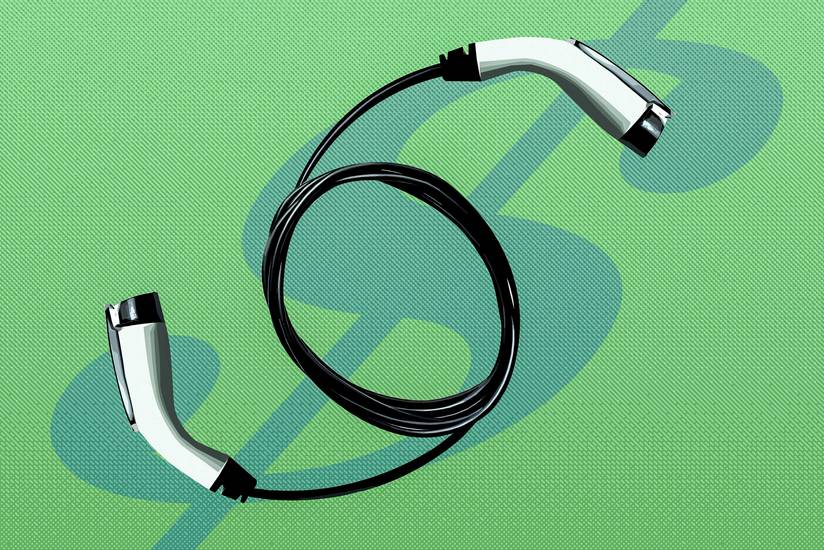Read The Full Article On: Cars
f you’ve been shopping for or researching an electric vehicle, you’ve almost certainly heard about things like EV tax credits, specifically the federal government’s offer of a federal tax credit worth up to $7,500 if you purchase an eligible electric car. Which EVs are currently eligible? How does the federal tax credit work?
What’s Eligible?
Let’s start with currently available eligible vehicles, which must be purchased — not leased — as new vehicles. Here they are in alphabetical order by manufacturer:
Electric Cars Eligible For $7,500 Tax Credit
- Audi eTron, eTron Sportback
- BMW i3
- Hyundai Ioniq EV
- Hyundai Kona EV
- Jaguar I-nPace
- Karma Revero
- Kia Niro EV
- Mini Cooper SE Hardtop
- Nissan Leaf
- Polestar 1
- Polestar 2
- Porsche Taycan
- Volvo XC40 Recharge
- Volkswagen ID.4
Notice anything missing from that list? If you’re wondering why no Teslas or the recently announced GMC Hummer EV are included, it’s because GM and Tesla vehicles are no longer eligible for the federal tax credit. When a manufacturer sells its 200,000th qualified vehicle, the tax credit is
The remainder of the list includes practical city cars like the Nissan Leaf, more premium hatches like the BMW i3 and Mini Cooper SE Hardtop, and luxury SUVs like the Jaguar I-Pace and Audi eTron. It also includes probably the most discussed non-Tesla EV at the moment, the Porsche Taycan.
Other plug-in and alternative-engine vehicles are eligible for lower tax credits. The full list of eligible electric vehicles is maintained by the Department of Energy, and another list can be found on the IRS website.
scheduled to wind down, reducing by half to $3,750 and then half again over a period of time before being reduced to nothing. Tesla sold its 200,00th vehicle in 2018, and the credit fully expired at the end of 2019. Another popular EV, the Chevrolet Bolt EV, also is no longer eligible for any tax credit.
How Do I Get the Federal EV Tax Credit?
First, you have to buy a new and eligible electric vehicle. Assuming you’ve done that: Congratulations on your new car purchase! After that, you’ll need to fill out IRS Form 8936 to claim your credit of up to $7,500.
Why Do You Keep Saying “Up To”?
“The qualified plug-in electric drive motor vehicle credit is a nonrefundable federal tax credit of up to $7,500,” according to Jackie Perlman, principal tax research analyst at The Tax Institute at H&R Block. “The credit reduces your tax liability dollar for dollar. Tax liability means the amount of tax figured on your net taxable income. If the credit is more than your tax liability, you won’t receive the rest of the credit.” As one example, say you owe $4,000 in taxes before applying the credit — your tax bill will be reduced to $0, but you won’t receive that extra $3,500.
The non-refundable tax credit cannot directly increase your tax refund and cannot reduce your tax liability below $0, but it could lead to a higher refund.For example, when tax withholding is added to the equation. In a situation where a taxpayer has a tax liability of $20,000, “If the taxpayer had exactly $20,000 withheld, [they] would be due a refund of $7,500,” says Christine Williamson, CPA, of Clear Advantage Tax & Accounting Solutions.
And what about if tax liability was only $6,000? “If the taxpayer had total withholding of $6,000, [they] would be entitled to a refund of the full $6,000. But if the withholding was only $3,000, only $3,000 would be refunded,” said Williamson.
It’s best to consult with a tax professional to see how the tax credit will apply to your specific financial and filing situation.
How Much Do I Need to Make to Have a $7,500 Tax Liability?
We checked with the professionals about this, too. According to Kevin Martin, principal tax research analyst at The Tax Institute at H&R Block, if we assume only a standard deduction and no other credits, a single filer will need an income of $65,116 in 2019 and $65,627 in 2020 to have $7,500 in tax liability. Head of household filers would need to have made $77,723 in 2019 or be making $78,432 in 2020. Married couples filing jointly would need to have incomes of $90,133 in 2019 or $90,592 in 2020. Once again, however, consult with a tax professional about your specific filing situation.
Are There Other Credits?
Yes, usually at the state level, though what vehicles are eligible and how much is offered will vary. You can find a list of offers compiled by state here
What About Used EVs?
Again, there may be state or other local incentive programs that apply to the purchase of a used electric vehicle, but the federal EV tax credit does not.
Can I Lease a New EV and Get the Federal Credit?
No — at least, not directly. The credit only applies to purchased new electric vehicles, but those savings may be passed on to the lessee via a lower monthly payment.
The Tesla Model Y and GMC Hummer EV Are New, Why Aren’t They Eligible?
The 200,000 vehicles sold rule applies in total to all qualifying vehicles sold by a manufacturer, not just on a model-by-model basis. Tesla has been selling the Model S, Model X and Model 3 for years already, and GM’s eligibility for any portion of the tax credit ended March 31.
Are Any Other Manufacturers Close to Having the Credit Phase Out?
Not especially. It will likely be several years before Nissan, the next closest manufacturer, reaches the 200,000 vehicles sold threshold, though the introduction of the all-electric Ariya SUV in 2021 may accelerate that timeline. A potential dark horse in this race is Volvo, which is making an aggressive push to electrify its lineup, as is Volkswagen; both, however, are significantly far away from selling 200,000 qualifying vehicles.

